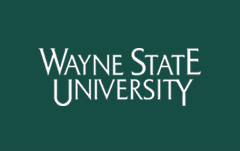Access Type
Open Access Dissertation
Date of Award
January 2022
Degree Type
Dissertation
Degree Name
Ph.D.
Department
Molecular Biology and Genetics
First Advisor
James G. Granneman
Abstract
Global incidence of Type 2 Diabetes (T2D) has reached epidemic proportions, and increasing evidence indicates that dysfunctional adipose tissue is an important contributor to the pathogenesis of T2D. Expanding brown adipocyte (BA) populations within adipose tissues through adrenergic activation improves energy balance and insulin sensitivity. In order to exploit this remodeling of adipose tissue for therapeutic benefit, we need to understand the mechanisms by which adrenergic signaling expand populations of BAs in vivo. These studies utilized single-cell RNA-sequencing and transgenic mouse models, in combination with single-molecule fluorescence in situ hybridization (smFISH) and immunoistochemical analysis, to study BA neogenesis in vivo. scRNA-seq identified distinct PDGFRA+ adipocyte progenitor subpopulations in all adipose depots that appeared to be differentially poised to enter the adipogenic pathway. These progenitor subtypes occupy distinct tissue locations. Beta3-adrenergic receptor (ADRB3) activation triggered the dramatic appearance of proliferating ASCs in mouse epididymal white adipose tissue (eWAT), whose differentiation into BAs could be inferred from a single time point. scRNA-seq identified various immune cell types in eWAT, including a proliferating macrophage subpopulation that occupies adipogenic niches. In interscapular brown adipose tissue (iBAT), knockout of the Beta1-adrenergic receptor (ADRB1) in progenitors did not prevent cold-induced neogenesis. However, pharmacological activation of the ADRB3 on BAs was sufficient to induce neogenesis, suggesting that signals derived from mature BAs indirectly trigger ASC proliferation and differentiation in iBAT as in eWAT. In this regard, cold exposure induced the delayed appearance of multiple macrophage and dendritic cell populations in iBAT whose recruitment strongly correlated with the onset and magnitude of neogenesis across diverse experimental conditions. High resolution immunofluorescence and smFISH demonstrated that cold-induced neogenesis involves dynamic interactions between progenitor subtype ASC1 and recruited immune cells that occur on the micrometer scale in distinct tissue regions. Finally, we acknowledge that tissue digestion method can alter cells captured with scRNA-seq and therefore confound results. It is therefore critical validate results from scRNA-seq in the intact tissue. This work provides unbiased profiling of BA neogenesis in multiple adipose tissues at the single-cell level, and demonstrates a framework for validating single-cell results with smFISH and immunohistochemistry.
Recommended Citation
Burl, Rayanne, "Deconstructing Brown Adipocyte Neogenesis In Brown And White Adipose Tissue" (2022). Wayne State University Dissertations. 3663.
https://digitalcommons.wayne.edu/oa_dissertations/3663
Supplementary Movies 1 and 2.pptx
Table S1 - Methods Supplement smFISH Probes and Sequencing.xlsx (25 kB)
Table S1 - Methods Supplement smFISH Probes and Sequencing.xlsx
Table S2 - PDGFRACD44 FACS.xlsx (499 kB)
Table S2 - PDGFRACD44 FACS.xlsx
Table S3 - eWAT Linneg and Linpos.xlsx (760 kB)
Table S3 - eWAT Linneg and Linpos.xlsx
Table S4 - iWAT Linneg.xlsx (99 kB)
Table S4 - iWAT Linneg.xlsx
Table S5 - eWAT and iWAT Linneg.xlsx (88 kB)
Table S5 - eWAT and iWAT Linneg.xlsx
Table S6 - iBAT C57 scRNAseq Library Cluster DEGs.xlsx (1558 kB)
Table S6 - iBAT C57 scRNAseq Library Cluster DEGs.xlsx
Table S7 - iBAT Adrb1 KO Linneg scRNAseq Library Cluster DEGs.xlsx (535 kB)
Table S7 - iBAT Adrb1 KO Linneg scRNAseq Library Cluster DEGs.xlsx
Table S8 - Burl Shamsi Integration Cluster DEGs.xlsx (287 kB)
Table S8 - Burl Shamsi Integration Cluster DEGs.xlsx
Table S9 - Digestion Method scRNAseq Library Cluster DEGs.xlsx (1387 kB)
Table S9 - Digestion Method scRNAseq Library Cluster DEGs.xlsx
